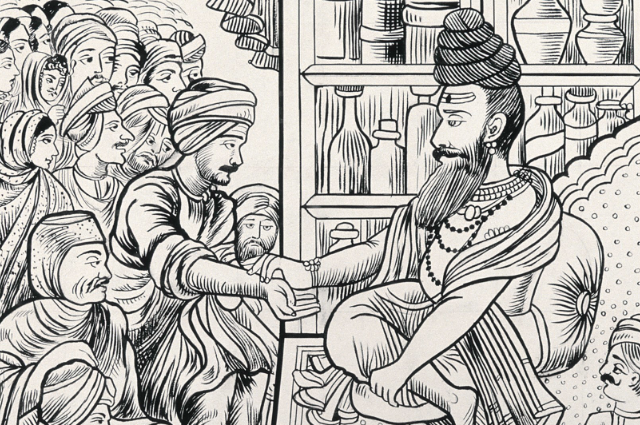India, that is Bharat, is a land not only with a rich past, culture & heritage, but also with various innovations. Despite having a huge impact on the whole world, most of the people, even from India, don’t even know that those innovations are from India.
Most of these innovations were from Ancient India, which was indeed a golden period for India. It was during this period, when India was called Sone Ki Chidiya or The Golden Bird, since we had around 32% of the world’s GDP. Not only this, Ancient India produced a lot of great philosophers, mathematicians, teachers, astronomers, such as Brahmagupta, Aryabhata, Sushruta, and Bhaskara, and the credit of most of these innovations from Ancient India goes to them. So now, let’s have a look at these innovations, their innovators, and their impact on the whole world.
Decimal System & Zero
Zero (0), a mathematical number and symbol which holds a great importance in our today’s life, as we can determine the greatness of a number only by the number of zeros in it. This important number was established in Ancient India by Aryabhatta, the great mathematician, astronomer and a teacher at the prestigious Nalanda University. He innovated zero as a digit and introduced it into the decimal system in the 6th century CE. 100 years later, Brahmagupta, another great mathematician-cum-astronomer and the author of Brāhmasphuṭasiddhānta, used zero in mathematical operations like addition and subtraction. He also established rules for using zero in arithmetic. Aryabhatta, is not only credited with the innovation of zero, but also with introducing the decimal system to the world. He used the concept of place value and the decimal point to represent numbers in his mathematical works.
Navigation System
In today’s time, whenever we have to go to a location, we are highly dependent on GPS Navigation systems like Google Maps. The root of the GPS navigation system, which is the navigation system, is also an innovation from Ancient India, without which we would not be able to go anywhere to a new place. The word “Navigation” is itself derived from the Sanskrit word “Navgatih”. The Nowka Shastra or The Science of Navigation, was taught in the notable Takshashila University. According to historical evidences, the navigation system originated 6000 years ago, around 2500 BCE, during the period of Indus Valley Civilization, when the Indus Valley people utilized monsoon winds and currents for maritime trade and navigation, making it one of the earliest documented examples of navigation in the world; archaeological findings and texts from the Vedic and Sangam periods further support this claim. The oldest known dockyard of the world is located at the Harappan city of Lothal, which was connected to an old course of the Sabarmati River. After the Indus Valley Civilization, the sailors from Kalinga improved the navigation system and sailed to the distinct lands of Bali, Java, Sumatra, Sri Lanka, and many more. These sailors were known as Sadhabas, and the ships they would sail were called Boitas. The Sanskrit texts of Yuktikalpataru and Madalapanji, authored by King Bhoja, give us a detailed account of these Boitas and their classifications and dimensions. Even today in Odisha, there is a festival called Boita Bandana, also known as Bali Jatra, which is celebrated every year to mark the commemoration on the day when the ancient Sadhabas would set sail to distant lands of Bali and Java. The first recorded navy in the world is considered to be the Mauryan navy. The Arthashastra, written by Chandragupta Maurya’s minister and mentor Chanakya, describes the department of waterways and the admiralty division. Even in Indica, an account of Mauryan India by the Greek writer Megasthenes, mentions that Chandragupta had a great navy army who were always prepared for any sea battle.
Surgery
Not just the decimal and navigation system, but Ancient India had also innovated surgeries, which is a crucial part of today’s medical science. Sage Sushruta, an Ayurvedic physician from Kashi, is known as the “Father of Surgery” being the world’s first ever surgeon and credited with various surgical innovations. His treatise, the Sushruta Samhita, provides a detailed account of his surgeries and it is also considered as the foundational text of Ayurveda. In ancient India, there was a common punishment for doing political betrayals, which was cutting the nose of those people. That is when Sushruta innovated Rhinoplasty, or the nose job, which is one of the major surgical innovations of Sushruta. As per the Sushruta Samhita, Sushruta used a flap of skin from the forehead to repair the noses of those people with amputated noses. Today, just like we have anaesthesia before a surgery, at that time, Sushruta used herbal anaesthetics to numb a specific body part of the people before performing a surgery on them. His surgical innovations paved the way for today’s modern surgery, and his surgical procedures and medical treatises continue to influence today’s modern medicine and science.
Not just these, Ancient India has given us a lot of innovations, such as buttons and even games like ludo and chess, but these innovations deserve a whole book and they cannot be described in only one article. So from today, whenever we write zero and perform the decimal system, use the GPS navigation system of Google maps or hear about surgeries, remember that these have origins from our Ancient India and have contributions of various great innovators.

